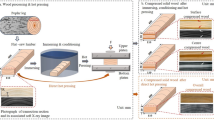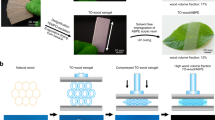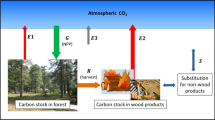Abstract
THE electrical resistance of wood increases very rapidly with decrease in moisture content (grams of water present per 100 grams dry weight), so that, if two probes about 2 cm. apart are driven into the centre of a drying board, the resistance between the probes can be used as an indication of moisture content.
This is a preview of subscription content, access via your institution
Access options
Subscribe to this journal
Receive 51 print issues and online access
$199.00 per year
only $3.90 per issue
Buy this article
- Purchase on SpringerLink
- Instant access to full article PDF
Prices may be subject to local taxes which are calculated during checkout
Similar content being viewed by others
Author information
Authors and Affiliations
Rights and permissions
About this article
Cite this article
BARKAS, W., HEARMON, R. & PRATT, G. Electrical Resistance of Wood. Nature 151, 83 (1943). https://doi.org/10.1038/151083a0
Issue date:
DOI: https://doi.org/10.1038/151083a0



